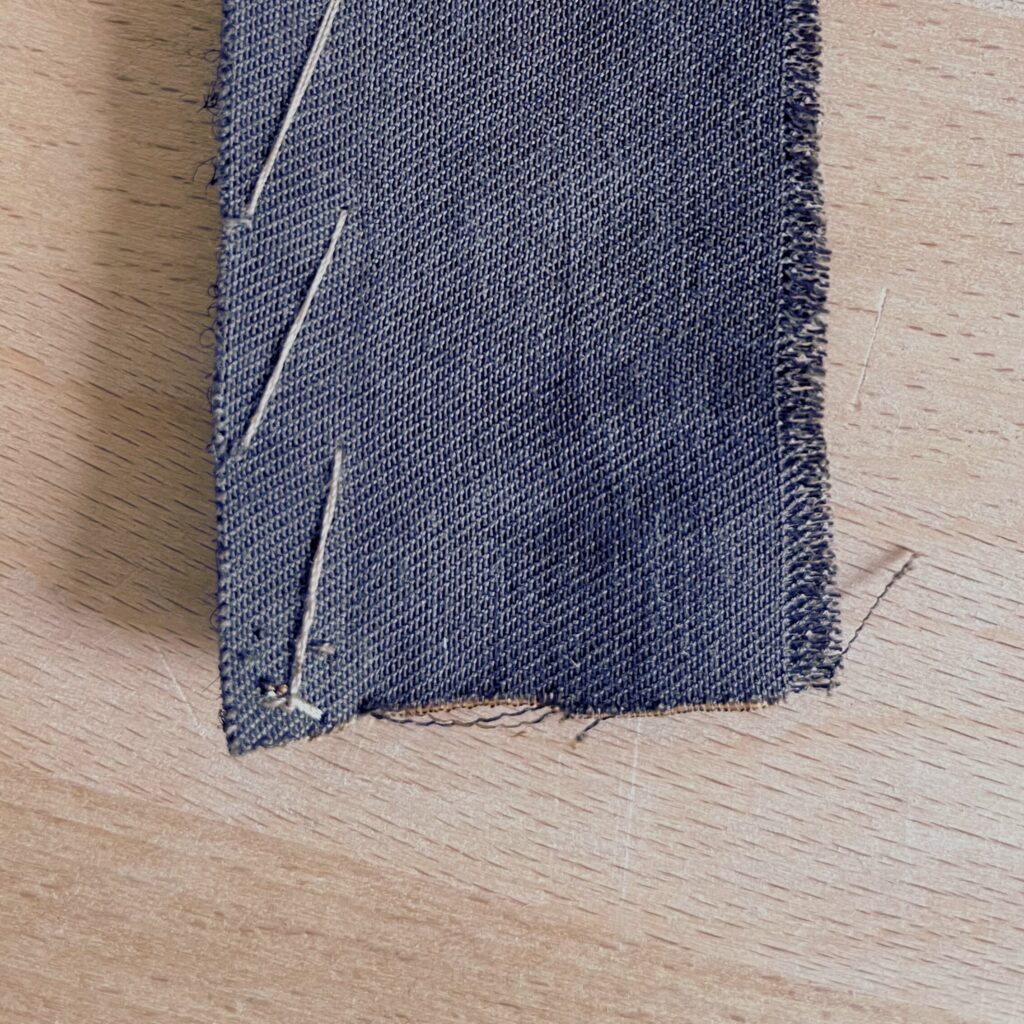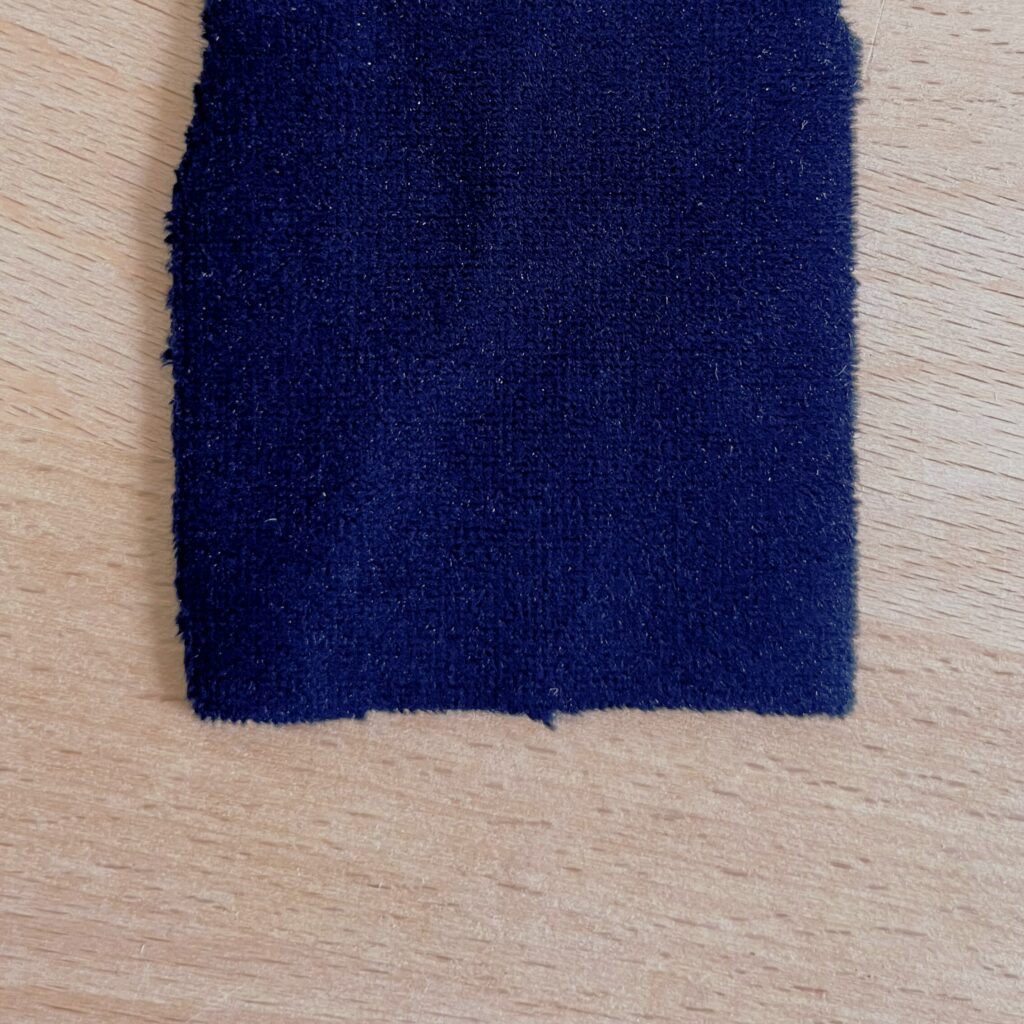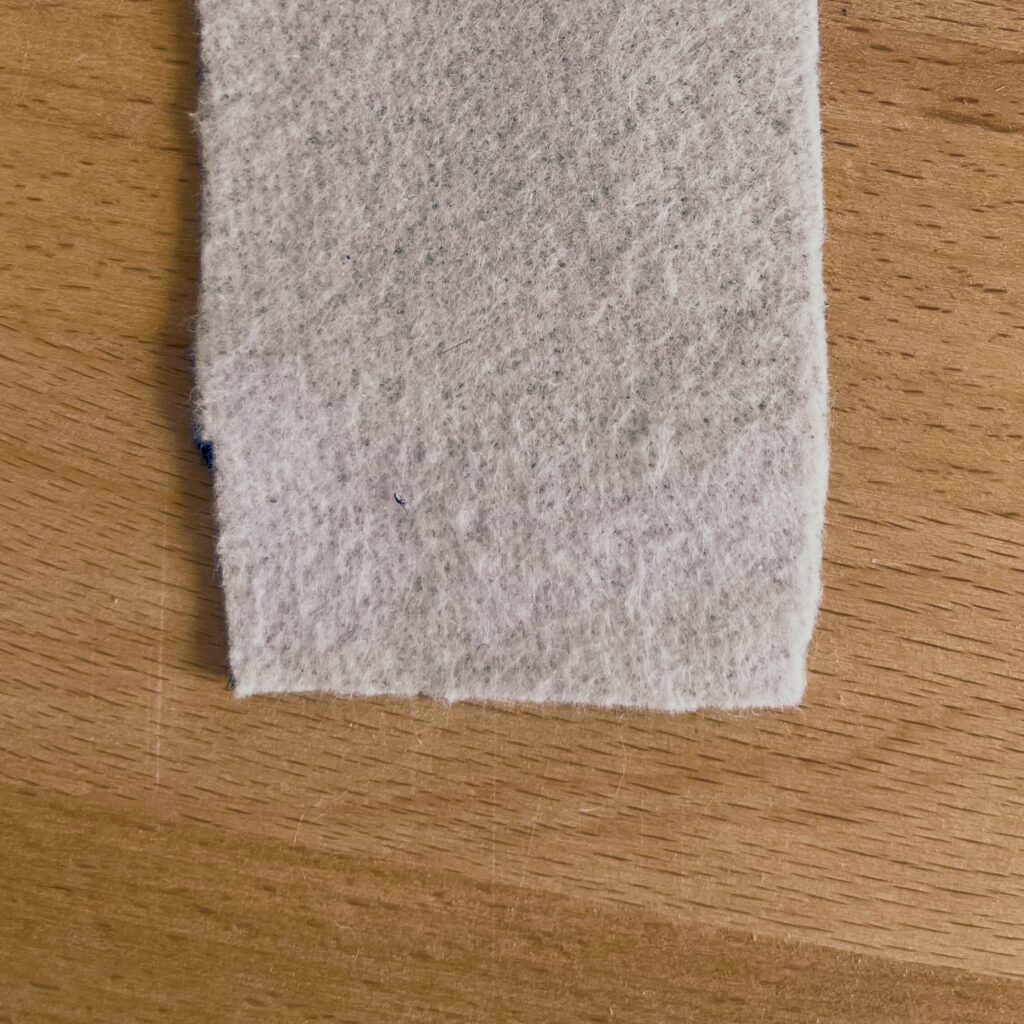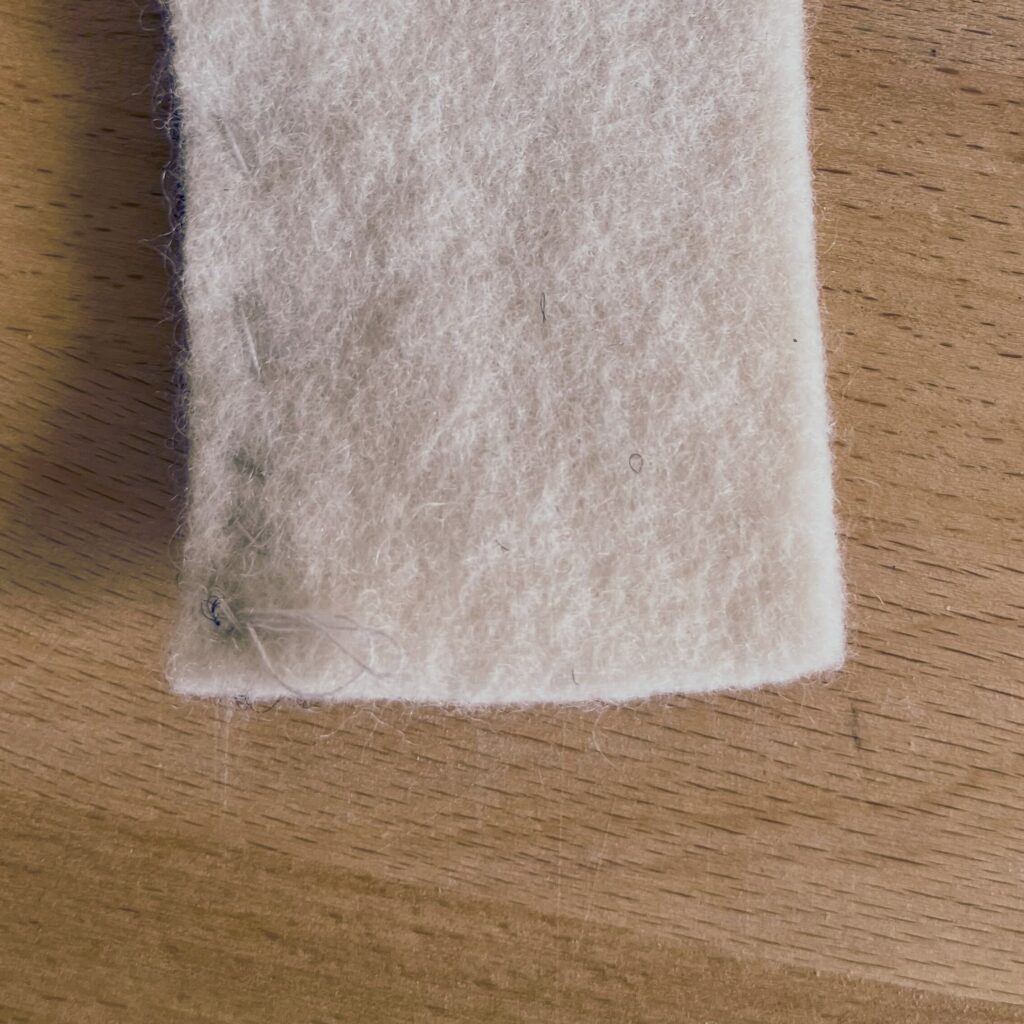The measurements below were made using a caliper, which was squeezed together tightly, then released to see how the felt jumps back.
Thin green cloth
Thickness: 0.3mm

This is a simple woven cotton material, which is a single layer. The change in sound is quite subtle, with almost no muting effect. The hammers hit an extra layer of dampening, so the result is a mellow, characteristic timbre.
Black satin cloth
Thickness: 0.6mm

On this piece of cloth, one side is satiny, the other is like an elastic band. Due to the thicker nature of this fabric, the hammers give a more thumpy sound, that separates from the sustain of the strings. The result is a soft mallet, vibraphone-like sound world.
Baby blue felt
Thickness: 0.9mm

Well, in life it has a tiny blue hue. This cloth has a thin felt front and a black backing that isn’t as cushioned as felt. To the touch, it has a vegan leather feel. This backing reacts to the vibrating string, giving it an extra zing. Hence the interesting clang-clang sound, like an electric piano.
Thick white felt
Thickness: 1.1mm

This is just an “ordinary” felt, also commonly used inside the piano. It is uniform on both sides, with little hairs sticking out – these make it very soft, giving a lot of cushion to the hammers. This results in much more dampening, therefore a big volume drop, and is the homage to the middle pedal of the common upright piano.